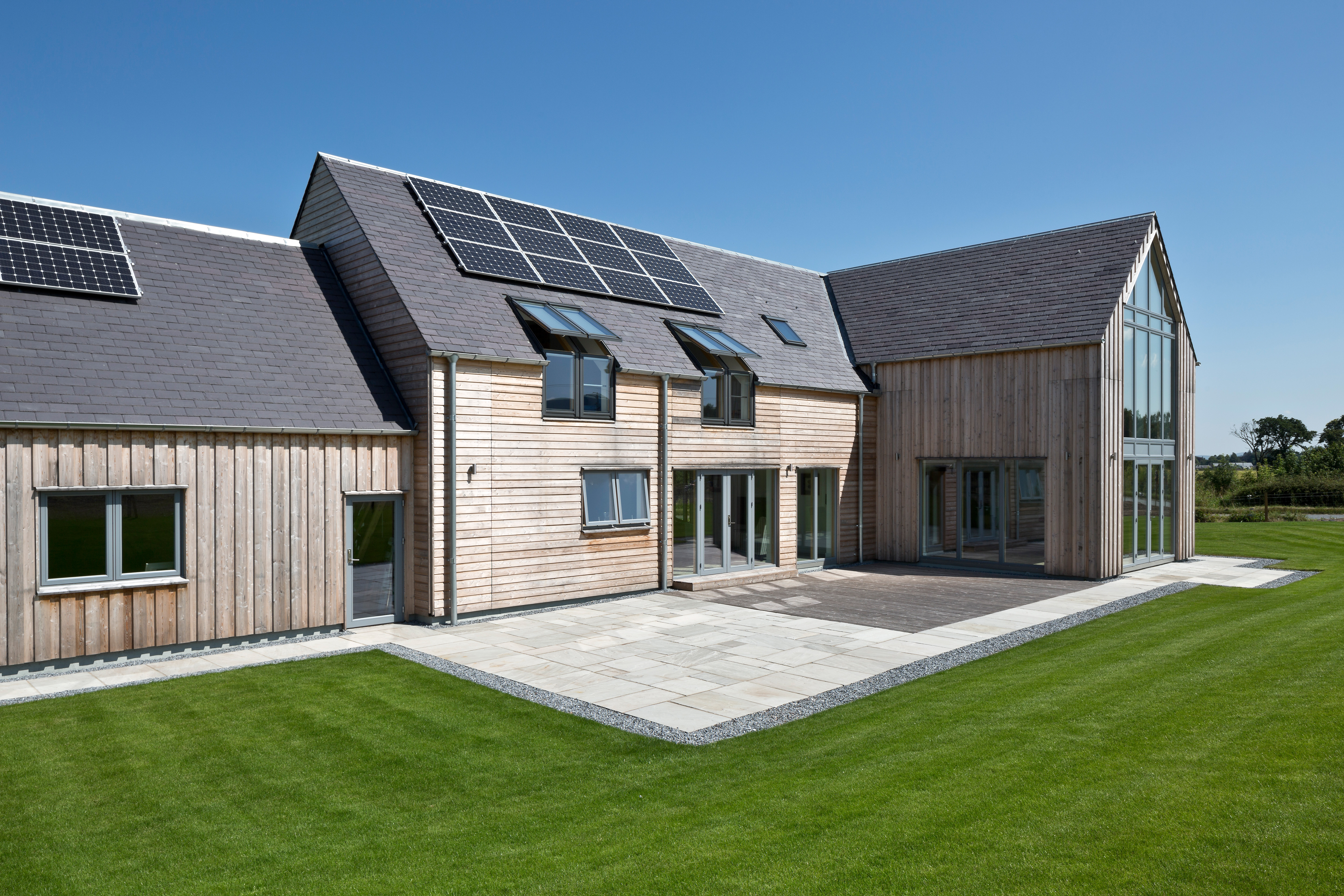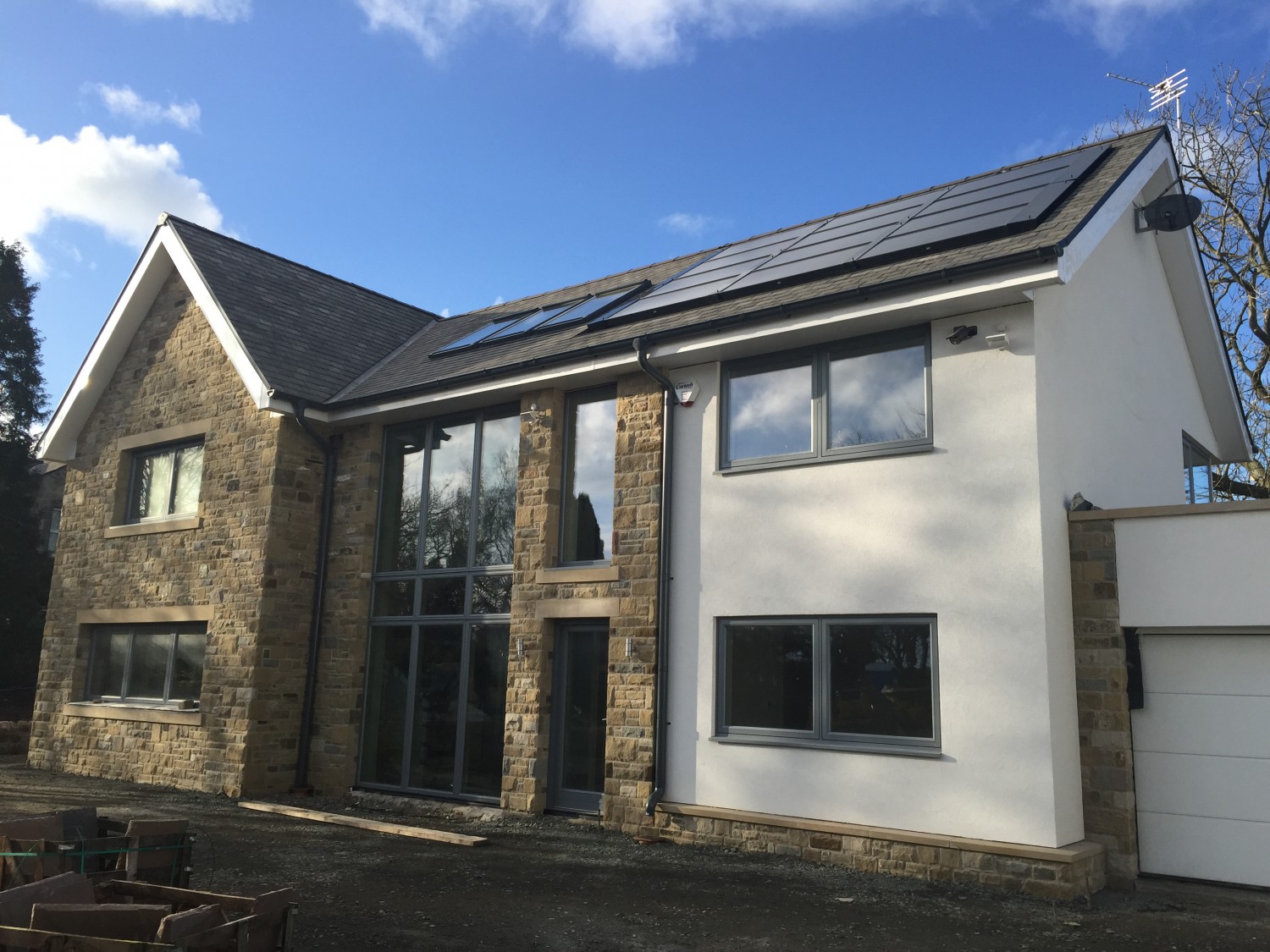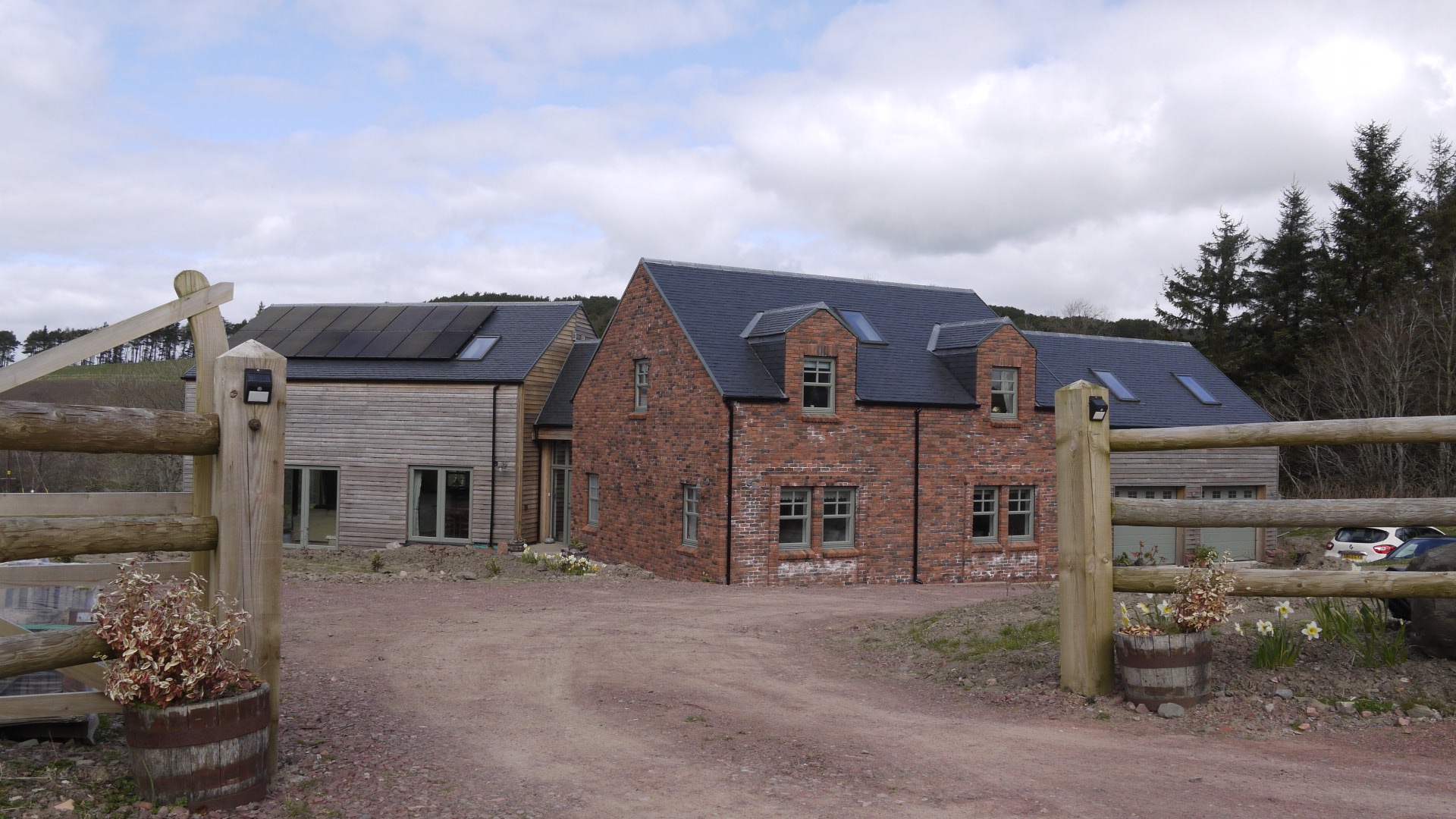Continuing this month’s focus on renewable technologies, this week, we wanted to bring our Self Builders some wisdom on Solar Photovoltaic Systems. Ceiba Renewables, a family run business based in Prestwick, Ayrshire, have kindly given us a great breakdown of everything you need to know about PV.
Ceiba offer the design, installation and commissioning of Solar Photovoltaic systems, as well as electric battery storage, Electric Vehicle Charge Points, and other solar-related technologies. Additionally, Ceiba can undertake G59 applications to the electricity Distribution Network Operators (such as SSE or Scottish Power) for solar systems that are >16A per phase on behalf of customers – which is best done during the grid connection application for the property.
Covering all of Scotland – from Aberdeenshire to Dumfries & Galloway – Ceiba Renewables started up in 2008, and have specialised in Solar Photovoltaic Systems since 2011. Director Duncan Crosthwaite explains all…
WHAT ARE THE BENEFITS OF INSTALLING SOLAR PV IN NEW SELF BUILD PROJECTS?
Solar panels capture the sun’s energy using photovoltaic cells, which convert this light into electricity. This energy can then be used to run your household appliances and lighting. There are many benefits of installing Solar Photovoltaics, which can still generate energy without direct sunlight.
First and foremost, you can reduce your energy bills significantly by generating your own Solar PV power. You can divert PV power into a hot water cylinder, or battery storage, to further increase your savings.
This storage solution is a great way of remaining energy independent, and you can protect yourself against future energy price rises. As there is less need to rely on imported, fossil fuel-generated grid energy, CO2 emissions and carbon footprint are reduced too.
There are increased benefits to installing Solar PV in a new build, as opposed to a retrofit, including the fact that it is VAT free! By incorporating Solar PV into the design stage, you can improve the aesthetics of the equipment, and reduce the visual impact.
For example, it’s easier to install an in-roof PV system, especially as you can reduce the number of slates or tiles your roof requires.
You can also tailor the Solar PV System size to your SAP energy requirements. For instance, one of our recent clients estimated that they would have an annual energy requirement of 8,250kWh, and as they wanted their property to be carbon neutral, they asked for a PV system that could produce 8,700kWh – making the new Self Build a net exporter of energy.
Sustainable technologies, such as PV, are great generally, as they can help self-builders meet Building Regulations as well.

HOW DOES SOLAR PHOTOVOLTAIC TECHNOLOGY COMPARE TO OTHER RENEWABLE ENERGY SOURCES, AND CAN THEY BE INTEGRATED WITH OTHER RENEWABLES EASILY?
Solar PV is a fantastic technology due to its simplicity. If designed correctly, using quality components, it will work well for more than 30 years with minimal maintenance. Here are some of the other types of renewables, and how they compare to Solar PV:
Solar Thermal – Solar PV can do the same job as a Solar Thermal system, by using a solar immersion diverter. This means Solar PV can heat your hot water cylinder, or a SunAmp battery. When the hot water cylinder is up to 60Cº, it can then carry on providing electricity to the home.
In comparison, a Solar Thermal system would shut down at 60Cº, even if the sun was still shining down on the panel. The maintenance costs associated with Solar Thermal seems to be the main issue with this technology, as often the maintenance costs wipe out the savings – so it’s only worthwhile in certain circumstances.
Wind Energy – Solar PV will not generate as much power as a wind turbine, but the PV system doesn’t make any noise, and it does not normally require planning permission. Solar PV is also practically maintenance free, when compared to wind turbines – which generally have quite a bit of maintenance involved.
Heat Pumps – PV is a great partner to a Heat Pump system, as it allows you to run your Heat Pump from your own self-generated power.
If you have a 400% efficient Heat Pump, then for every 1kWh of PV power you put into your Heat Pump, you get 4kWh of heat – which is a great return!

HOW DOES YOUR DESIGN PROCESS WORK? DO YOU WORK WITH ARCHITECTS FROM AN EARLY STAGE?
Our design process is straight forward and flexible to suit the client’s requirements. There’s quite a lot of varying advice out there – and frequent technology changes – so it can be hard to keep up.
We are more than happy to meet with architects and clients, to inform them of what the options are – for example, Sunpower versus Conventional panels – and to find out what their requirements and priorities are.
From there, we can build a quote with performance estimates. Sometimes there is a trade-off between aesthetics, and power output – for example, squeezing panels on to a south-facing roof may produce more power, but an east or west-facing roof may look better on the same property. We can work with the architect and client to assess options for these types of scenarios.
Solar PV can be fitted retrospectively, as can battery storage and its other associated technologies. If considering Solar, but not right away, a good tip would be to run the required cables – so that it’s easier for installing in the future.
Most of the time, the inverter is either located in the loft or garage – so if the builder has the opportunity to run, for example, a 6mm2 twin & earth cable, and a CAT5 cable, from that location to the consumer unit, then that would help reduce the Solar PV installation costs in future.
WHAT ARE THE TYPICAL COSTS INVOLVED FOR SOLAR PV ON NEW DOMESTIC BUILDINGS?
Cost will come down to several factors. You can buy really cheap Solar PV systems, but it’s the same as buying a cheap laptop, or car; it may work in the short-term, but there’s a good chance it’ll give you headaches in the not-too-distant future!
At Ceiba, we believe in installing high quality equipment that is designed to last, and is future-proofed, so generally we will be more expensive for the initial capital cost – but not so when viewed over the medium to long-term.
So, where it’s possible to buy a basic 4kWp solar PV system for around £5000, if our customer wanted to buy Sunpower panels with SolarEdge power optimisers, a full online system monitoring (including performance data of each panel), in-roof, with longest standard warranties on the market – then you’d be looking at around £7500.
For that extra money, our customer is getting a far superior solar system, it’ll last much longer, give better annual yields, and have excellent warranties – which not only covers the cost of replacing the panel or inverter, but will also (in the case of Sunpower’s 25 year power and 25 year product warranty, and SolarEdge’s 12 year inverter warranty) cover our time to fault-find, erect scaffold, replace and return the faulty panel if there ever happened to be one (which shouldn’t be the case!).
So essentially, we focus on value, not cost.

WHAT ARE YOUR TOP 5 TIPS FOR SELF BUILDERS LOOKING TO UTILISE SOLAR PV AS PART OF THEIR NEW PROJECTS?
I would say the 5 main considerations for Self Builders would be…
1. Electrical Requirements
In order to size the Solar PV system properly, what electrical equipment will you be running in your property? What are the expected occupancy times? Battery storage and immersion control can be utilised to maximise the use of solar power, even at night.
How much electricity your home is going to require is crucial to aligning the Solar PV system to your requirements – too small a PV system, and you’ll be at the mercy of rising electricity costs; too big, and you’ll see a longer payback than required (although future investment in an Electric Vehicle could utilise this excess power and enhance your savings).
2. Aesthetics
In-roof systems give the panels a low profile – similar to a Velux window. Combined with all-black panels, they look great on slate and tiled roofs.
3. Orientation
A south-facing roof is ideal, however panels can also be split east/west to maximise production in the morning/evening. Ground-mount systems are also available where the roof is not preferred or an option.
4. Grid-Connection
A Solar PV system >16A (4kWp) per phase requires a G59 application to the DNO (e.g. SSE or Scottish Power). We can undertake this work for our customers (<16A per phase is permitted and requires no additional permissions from DNO).
5. Quality of Components
As with most technologies, there is a wide range in quality between different manufacturers. Your Solar PV system is one of those technologies that you don’t want to get wrong, as its purpose is to produce power for the family home.
At Ceiba we will only recommend PV components that we know are designed to last – so as the years go by, and energy costs increase, the performance of your Solar PV system doesn’t decrease substantially. Peace of mind is crucial for us – as well as for our customers!
You can find more articles about other renewables below:


